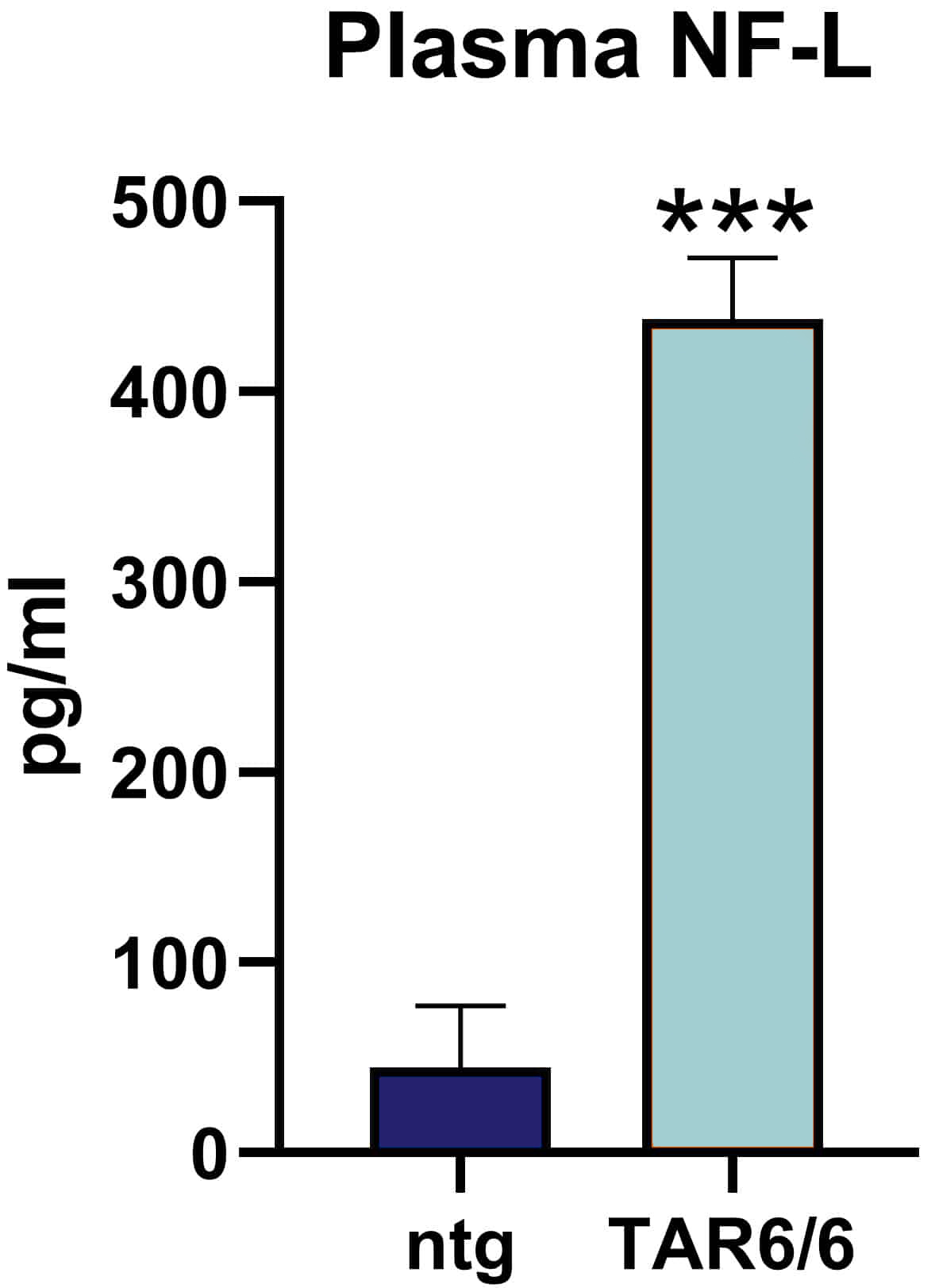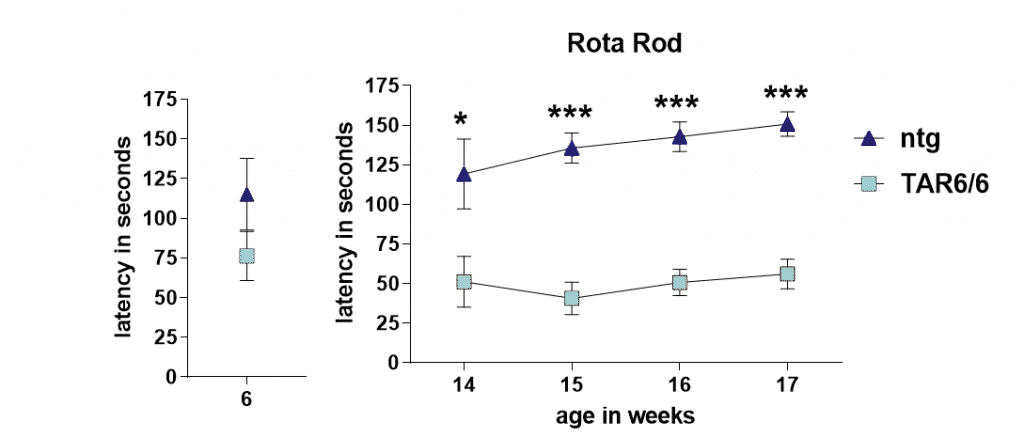The TAR DNA binding protein (TDP-43) is encoded by the TARDBP gene and shown to play a crucial role in a growing set of neurodegenerative diseases. While strongly related to sporadic and familial forms of amyotrophic lateral sclerosis (ALS), intraneuronal TDP-43 accumulation and aggregation is also related to frontotemporal lobar degeneration (FTLD-TDP).
TAR6/6 mice express human TDP-43 under regulatory control of the neuron specific Thy1 promoter (Wils et al. 2010). Mice are bred on a C57BL/6 background. Homozygous mice die prematurely at about 6 months and suffer from a severe ALS like motor phenotype.
The most important characteristics of TAR6/6 mice are:
- Increased TDP-43 levels and aggregations
- Motor deficits
- Learning deficits
- Neuroinflammation
- Neuron loss

Figure 1: Quantitative human TDP-43 expression in the hippocampus and spinal cord of TAR6/6, TAR6 and ntg mice at the age of 6, 14 and 24 weeks. Densitometric analysis of human TDP-43 levels normalized to tubulin levels of hippocampal (A) and spinal cord (B) homogenates from TAR6/6, TAR6 and ntg mice at the age of 6, 14 and 24 weeks. Homogenates were separated by SDS-PAGE and probed with the indicated antibodies. One representative example of 3 is shown. Two-way ANOVA with Bonferroni’s post hoc test. significances between genotypes, #significances between age groups. *p<0.05, **p<0.01, ***p<0.001.

Figure 2: Neurofilament light chain (NF-L) levels in the plasma of TDP-43 transgenic TAR6/6 mice. NF-L levels in the plasma of TAR6/6 mice (TDP-43) at the age of 9 weeks as model of ALS; TAR6/6: n = 6, ntg: n = 4; unpaired t-test. Mean + SEM. ***p<0.001.

Figure 3: Latency to fall from the RotaRod of TAR6/6 transgenic mice at the age of 6 and 14 to 17 weeks compared to age-matched non-transgenic littermates (ntg). A: tg n = 5; ntg n = 7; B: tg n = 11-3; ntg n = 16-5. Unpaired t-test or Mann Whitney test depending on normal distribution. Mean ± SEM. *p<0.05; ***p<0.001.
Additionally, Scantox offers research with the TAR4/4 mice as describes by Wils and colleagues (PNAS USA.2010Feb23;107(8):3858-63.). TAR4/4 mice present a stronger and earlier phenotype compared to TAR6/6 mice.
Scantox offers a custom-tailored study design for TAR6/6 and TAR4/4 mice, and we are flexible to accommodate your special interest. We are also happy to advice you and propose study designs. TAR4/4 and TAR6/ mice show a relevant ALS (PD) at early age. This grants a remarkable fast processing time of your ALS study. Furthermore, non-transgenic littermates are available as control animals needed for proper study design.
We are happy to evaluate the efficacy of your compound in the TAR4/4 or TAR6/6 mouse model! The most common readouts are:
Looking for something else? Please contact us!
You might be also interested in these related models:
As with many other in vivo models we are also ready to provide samples (brain tissue, CSF etc.) from these animals for analyses in your laboratory.
